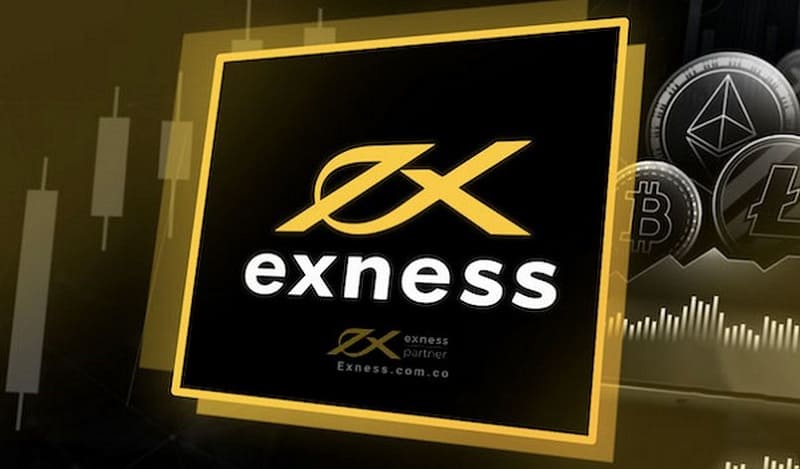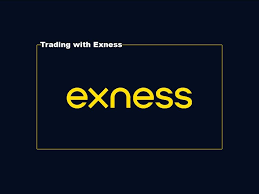
7 minute read
How to Change Leverage on Coinbase
In the fast-evolving world of crypto, leverage is the sword traders wield to multiply profits. But that same blade can cut deeply if used without caution. For users of Coinbase, a platform known for security and regulatory compliance, managing and adjusting leverage is not just a technical action—it’s a strategic decision. Whether you’re a beginner stepping into margin trading or a seasoned investor looking to recalibrate your exposure, understanding how to change leverage on Coinbase can be the key to safeguarding your capital while unlocking higher potential gains.
In this definitive guide, we’ll break down the entire process—what leverage is, how Coinbase approaches it, how to adjust or control it, and most importantly, how to avoid catastrophic mistakes.
🏅 3 Best Forex Brokers
1️⃣ Exness: Open Account Trading | Go to broker
2️⃣ XM: Open Account Trading | Go to broker
3️⃣ JustMarkets: Open Account Trading | Go to broker

💡 What Is Leverage in Crypto Trading?
Leverage is a financial tool that allows traders to open positions larger than their actual account balance. By borrowing funds from the exchange, you can increase your exposure to an asset without owning the full amount.
For example:
With 2x leverage: You can open a $2,000 position using just $1,000 of your capital.
With 5x leverage: That same $1,000 can control a $5,000 position.
While this amplifies gains, it also magnifies losses—a critical fact that must guide every decision around leverage.
⚠️ Leverage is neither good nor bad—it’s the trader’s discipline that defines the outcome.
🏛️ Does Coinbase Offer Leverage?
Coinbase, as a publicly listed company and a highly regulated platform, takes a conservative stance on leverage. Unlike offshore crypto exchanges that allow 50x or even 100x leverage, Coinbase offers limited and regulated margin trading options, and only to eligible users under strict conditions.
Coinbase’s margin features (also referred to as Coinbase Borrow or Margin Trading) may not be available in all jurisdictions and are typically limited to:
Institutional or advanced traders
U.S. residents in select states
Specific asset classes (mostly major crypto pairs)
Regulatory-compliant use cases (e.g., collateralized loans)
In short: Coinbase is not a high-leverage platform by design. But it does offer controlled leverage tools for risk-conscious users.
🔐 Margin vs. Leverage: What’s the Difference?
It’s crucial to distinguish between margin and leverage:
Leverage is the multiplier (e.g., 2x, 5x, 10x) that defines how much your exposure exceeds your capital.
Margin is the amount of capital you put down to open a leveraged position.
Coinbase’s margin model often works through collateral-based borrowing, rather than traditional “perpetual futures” with adjustable leverage.
📲 How to Access Margin Trading on Coinbase
Before you even think about changing leverage, you need to enable margin trading (if eligible). Here's how:
✅ 1. Verify Your Identity
Coinbase requires full KYC (Know Your Customer) verification before allowing any leverage or borrowing services. This includes:
Government-issued ID
Proof of residence
Possibly financial background (depending on region)
✅ 2. Apply for Margin or Borrow Access
You must submit an application to access Coinbase's borrowing products:
Navigate to your account settings
Enable “Borrow” or “Margin” (if available)
Complete any eligibility assessments
Note: Not all users will see the option, especially in restricted jurisdictions.
🔧 How to Change Leverage on Coinbase (Direct and Indirect Methods)
Unlike other platforms where you set leverage on a trade-by-trade basis, Coinbase does not let you freely change leverage with a dropdown. Instead, you change your effective leverage through how you structure your collateral, borrowing, and position sizes.
Here’s how to do it in practice:
⚙️ Method 1: Adjust Borrowed Amount Against Collateral
When you use Coinbase Borrow, you're putting up collateral (usually BTC) to borrow fiat currency (e.g., USD). The loan-to-value (LTV) ratio determines your effective leverage.
Lower LTV = lower leverage, safer
Higher LTV = higher leverage, riskier
To reduce your leverage:
Add more collateral (e.g., deposit more BTC)
Repay a portion of the borrowed funds
To increase leverage:
Borrow more funds against the same amount of collateral (within limits)
🧠 This method gives you precise control over how much risk you’re taking, even if leverage isn’t shown as "2x" or "3x."

⚙️ Method 2: Use Trading View to Track Effective Leverage
Even if Coinbase doesn't display leverage directly, you can track it manually.
Formula:
Effective Leverage = Position Size ÷ Account Equity
Let’s say:
You borrow $2,000 against $1,000 in BTC
You buy $3,000 worth of ETH
Your effective leverage is:
$3,000 ÷ $1,000 = 3x
Use this to monitor your exposure and make informed adjustments.
⚙️ Method 3: Open Smaller Trades (Reduce Exposure)
One of the most underrated ways to control leverage is to simply reduce your trade size. This is effective when you're dealing with volatility and need to preserve capital.
For instance, instead of opening a $5,000 trade with $1,000 capital (5x leverage), open a $2,000 trade—your leverage drops to 2x instantly.
⚙️ Method 4: Use Stop-Losses and Take Profits to Simulate Leverage
By using tight stop-losses and frequent profit targets, you can simulate high-leverage returns without the capital risk. This strategy works especially well in sideways markets where breakout trades are rare.
📊 Real-World Example of Adjusting Leverage on Coinbase
Let’s say you deposit 0.5 BTC as collateral. Coinbase allows you to borrow up to 40% of that value in USD (hypothetically). If BTC is at $60,000:
0.5 BTC = $30,000
Borrowing 40% = $12,000
If you only borrow $6,000, your LTV is 20% — this is conservative.If you max out at $12,000, your LTV is 40% — this is more aggressive.
By tweaking the borrowed amount, you’re indirectly increasing or decreasing your leverage.
📉 The Risk of Misusing Leverage on Coinbase
Coinbase’s design intentionally limits leverage to reduce user risk, but that doesn’t mean you’re immune to:
🧨 Margin Calls: If your collateral drops in value, you may be asked to add more or face liquidation.
🔥 Liquidation: If LTV thresholds are breached, Coinbase will automatically liquidate assets to repay loans.
💔 Emotional Trading: Over-leveraging, even slightly, can lead to panic decisions and irrational behavior.
🔐 Always keep a buffer above the liquidation threshold—never borrow to the max limit.
🛡️ Risk Management Best Practices
Even with moderate leverage, the volatility of crypto demands sharp discipline.
Here are essential best practices:
🔸 1. Keep LTV Low
Aim to borrow no more than 20-25% of your collateral’s value. This gives breathing room during price swings.
🔸 2. Regularly Rebalance Collateral
As BTC fluctuates, top up your account if your LTV creeps toward dangerous levels.
🔸 3. Use External Tracking Tools
Since Coinbase doesn’t display leverage directly, use Excel, Notion, or a trading app to calculate it manually.
🔸 4. Practice Simulated Trading
Before borrowing real funds, test your strategy in a sandbox environment with virtual portfolios.
📚 Coinbase Pro and Institutional Leverage
If you're a high-net-worth individual or managing client funds, Coinbase Institutional or Coinbase Prime may offer custom margin terms, including:
Higher leverage ratios (1:3 or 1:5 on select assets)
Access to OTC liquidity
Dedicated account managers
Lower fees on large-volume borrowing
However, these features are by invitation or qualification only. The retail user experience is more conservative by design.
❌ What Coinbase Doesn’t Allow (and Why)
Many users ask:
"Why can’t I trade 50x on Coinbase like on Binance or Bybit?"
Here’s why:
🇺🇸 Regulatory Pressure: As a U.S.-regulated exchange, Coinbase must follow SEC and CFTC rules.
🛡️ Consumer Protection: Limiting leverage protects users from massive losses.
📈 Market Integrity: High-leverage exchanges often enable market manipulation, which Coinbase actively avoids.
🧠 Coinbase plays the long game: sustainability over speculation.

📣 Final Thoughts: Mastering Leverage the Coinbase Way
Changing leverage on Coinbase isn’t about clicking a setting. It’s about managing your capital and risk intelligently within a tightly regulated environment. While you may not get access to 100x degenerate-style trading here, you gain control, security, and consistency—three things that matter far more in the long run.
To recap:
Leverage = power, but only with control
Coinbase limits leverage to protect users
You can adjust effective leverage via collateral, borrowing, and position size
Always track LTV and maintain a risk buffer
⚔️ Trade with precision, manage with discipline, and let leverage serve you—not sink you.










